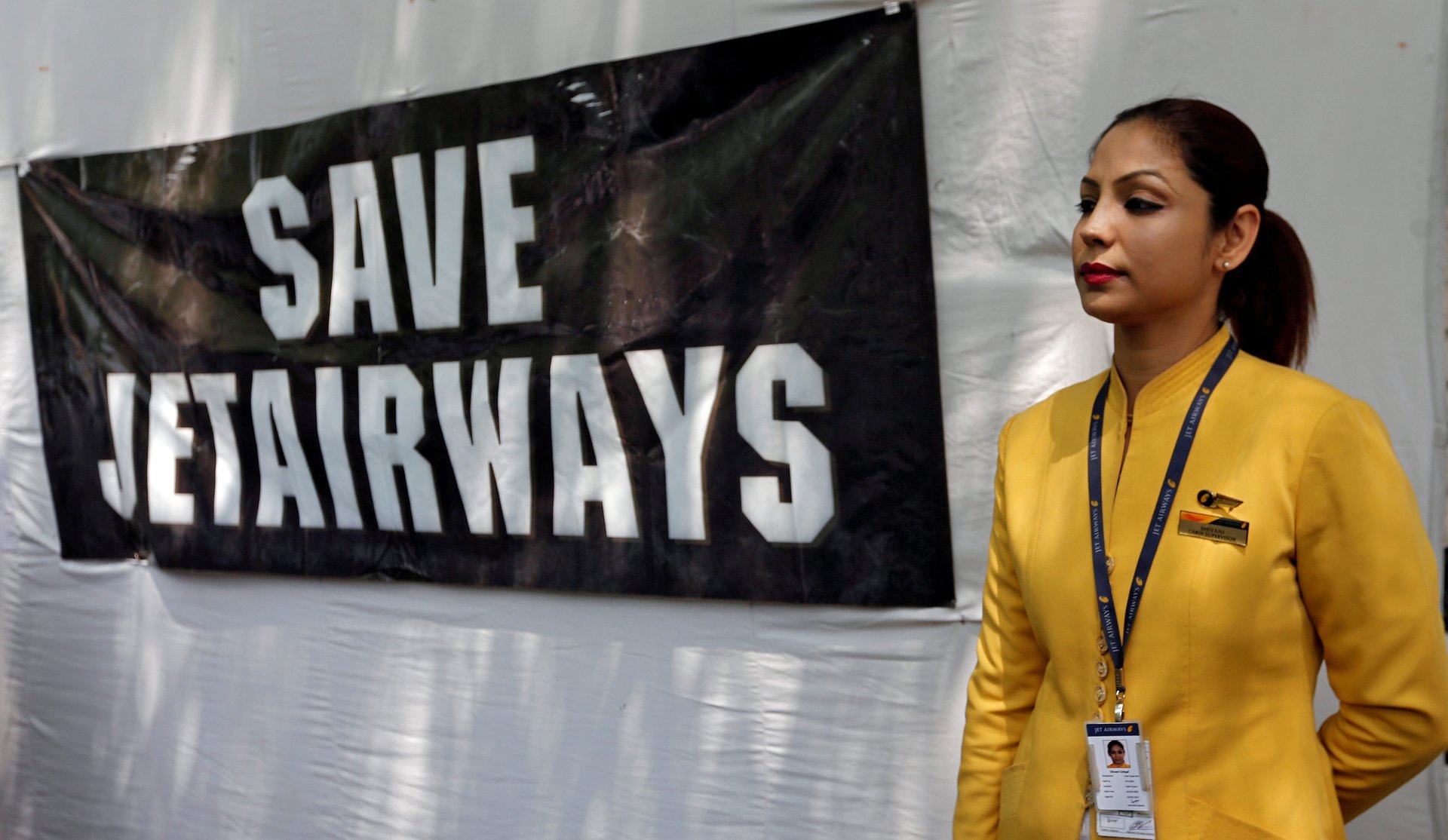What will it take for India’s oldest private airline to fly again?
After a cash crunch grounded it about 20 months ago, India’s oldest private airline is now all set to take to the skies again. But with new owners who have no track record of operating a carrier and a pandemic that is still raging in India, it might be a turbulent flight for the airline.


After a cash crunch grounded it about 20 months ago, India’s oldest private airline is now all set to take to the skies again. But with new owners who have no track record of operating a carrier and a pandemic that is still raging in India, it might be a turbulent flight for the airline.
In October, a consortium of investors (pdf), including UK-based asset management firm Kalrock Capital and UAE-based businessman Murari Lal Jalan, officially took over Mumbai-headquartered Jet Airways, which had been grounded in April 2019. Both the new investors have no previous experience of managing an airline.
“We are still waiting for more details. Until then it’s too early to say that Jet will be able to disrupt the market or will enjoy the position it did earlier,” said Mumbai-based aviation expert Ashish Nainan. “As of now, we could possibly be looking at an airline which would be 15-20% the size of the erstwhile airline at best in the foreseeable future.”
It wasn’t easy for Jet Airways to find new investors. Even the Etihad Group, which held some stake in the airline, did not come to its rescue. This meant the company had to go to the National Company Law Tribunal (NCLT), where creditors appointed a resolution professional (RP) to find a new owner. Now, one of the first hurdles for Jet Airways, which was once synonymous with quality service in India’s aviation sector, is to get its resolution plan approved by the NCLT, India’s bankruptcy court.
Will Jet Airways fly high?
Experts believe there is a laundry list of issues that Jet Airways and its new owners will need to deal with in the near future:
Approval of NCLT: The creditors have already approved the plan. In October, a member of the Kalrock board said that the new owners look forward to “engaging with the Jet Airways stakeholders, and bringing back the glory and legacy of the airline.”
Investments: Even as Jet resumes operations on a smaller scale, it would need a substantial amount of funding to sustain. “It has to be seen how quickly and how much are the new owners going to invest in the airline,” Nainan said. Meanwhile, as per a report in The Times of India earlier this month, the new owners have offered $53.5 million as startup capital, with another $87 million in the first year of operation. Additionally, the new owners have to negotiate contracts with various vendors including fuel retailers and aircraft lessors.
Finding the slots: Taking back its previous slots will be the single most important step for Jet Airways to get back to its previously enjoyed position. “Jet needs to renegotiate and get back the slots that have been redistributed to other airlines,” Nainan said.
The timing and competition: The pandemic has broken the backbone of India’s aviation sector, and things will only get harder from here as a bunch of airlines fight for a limited number of travellers. It is still unclear whether Jet Airways will start only on domestic routes first or go for the international ones right from day one. In both scenarios, things won’t be smooth. If it starts on the local routes, it will be operating in an overcrowded market, and for international routes, it’ll need a bigger fleet size.
What’s working for Jet Airways?
Despite the problems, analysts are of the view that the airline’s quality service is what will benefit it the most and help it make a come back.
The news of new investors has already cheered investors. In October, the airline’s stock rallied 108%.
In fact, until Nov. 1, Jet Airways shares were the best-performing aviation stock in the world with over 130% jump this year versus a 42% plunge in the 27-stock Bloomberg World Airlines Index. The index includes the biggest carriers across the globe.